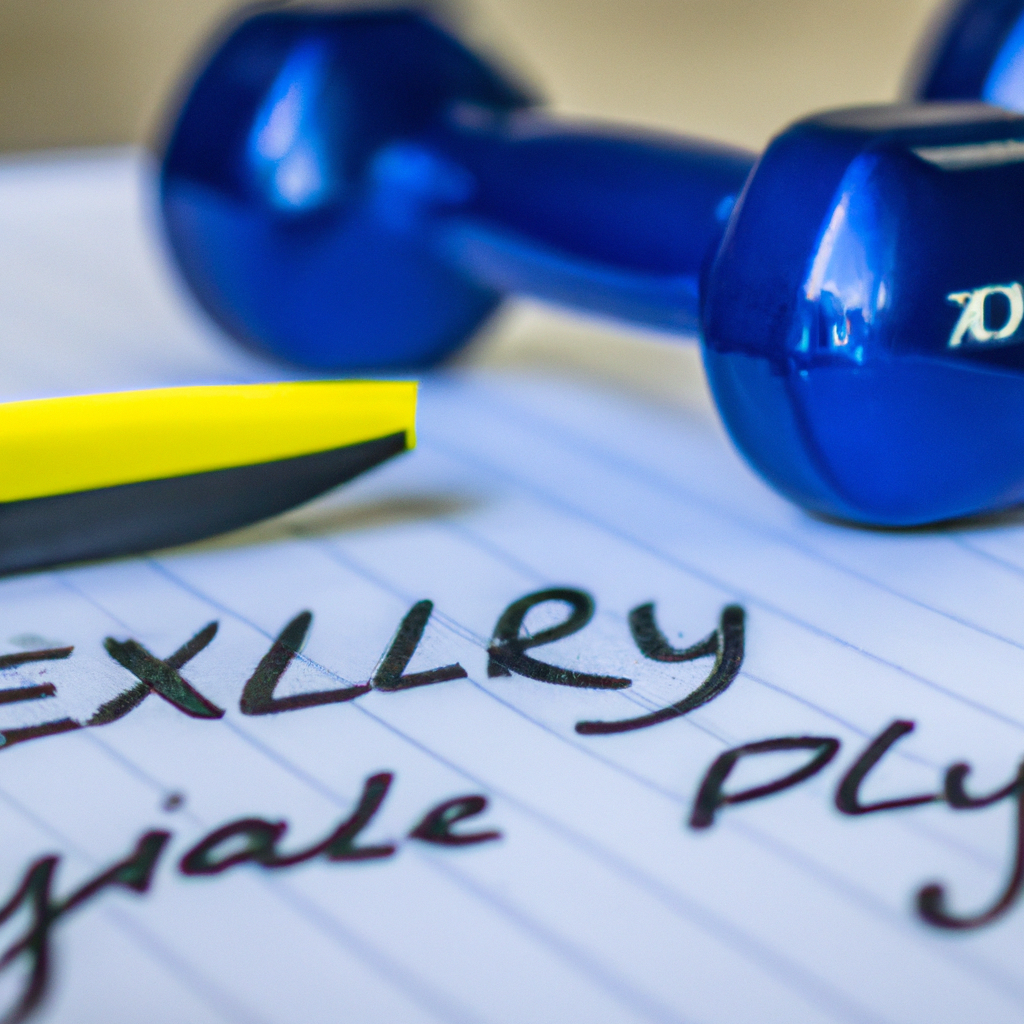Do you often feel that you don’t have enough time to incorporate physical activity into your daily routine? Don’t worry, you’re not alone! For many of us, finding the time to squeeze in a run or even fitting in an exercise class can be a challenge. But, by making small changes in your day to day activities, you can easily add physical activity into your daily routine and increase your overall health and wellbeing. In this article, we explore the benefits of daily exercise routines and share tips that will help you make physical activity a part of your daily life.
1. Make Exercise a Part of Your Daily Routine
Make sure to put exercise on your daily list of to-dos. Exercise will not only make your body healthy, it will energize your mind and boost your productivity.
- Cardiovascular Health: Regular physical exercise is important to maintain a healthy cardiovascular system.
- Strong Bones and Muscles: Exercise helps to strengthen your bones and muscles over time.
- Living Longer: Exercise slows down the ageing process and helps you to stay with a younger look and body for many years.
Not only may you be rewarded with a fitter external form and better health, there are many mental benefits to regular exercise as well. Exercise boosts your mood and helps you to cope better with stress and anxiety. It helps to provide an overall feeling of well-being, allowing you to feel energized and motivated to tackle the tasks of the day.
2. Finding Time for Physical Activity
One of the most common obstacles to staying physically active is the modern-world’s grueling schedules. It’s tough to fit in gym time when there are all sorts of tasks and events tugging at your sleeves. But it’s not impossible to fit in a bit of exercise – you just need to be creative.
Here are some tips for finding the time to make physical activity part of your routine:
- Make it a priority – just like brushing your teeth or getting enough sleep, it’s important to make physical activity part of your daily schedule.
- Set realistic goals – decide how much time you can commit, then break it down into smaller increments.
- Explore activities you enjoy – if there are activities that you enjoy, you’re more likely to stick with them.
- Team up – if you find a companion or group to participate in activities with, it can help you stay consistent.
We all make time in our lives for things that matter to us. Make physical activity one of those priorities, and soon you’ll have an opportunity available to maintain a healthy, active lifestyle.
3. Choosing the Right Exercise for You
From Weight Training to Meditation
Choosing a suitable exercise routine doesn’t need to be complicated. Whatever you feel comfortable enough to do and helps you reach your personal goals is the right choice. Weight training, swimming, running, or yoga; each has its own benefits and you should let your ideal focus and your body guide you.
If weight loss is your goal, then strength-training is a necessity. With the correct resistance and consistency, your body will naturally shed excess fat while gaining tone and definition. Finding activities that you enjoy, such as dance classes, can also be a fun and rewarding approach. Others may benefit more from more aerobic activities such as walking and jogging. Whichever you choose, be sure to get your heart rate up to maximize the benefits of exercise.
For those looking to improve their mental clarity and stress levels, meditation and mindful practices can be hugely beneficial. Even as little as five to ten minutes of mindful breathing and guided visualizations may be all you need to reduce your anxiety and improve your mood. Any mindful practice that fits your lifestyle can be your go-to for calming and centering yourself.
4. Considering Safety and Fitness Goals
When you’re thinking about fitness goals, safety must always come first. Before exercising, identify any potential risks and take the necessary precautions to guarantee your own wellbeing. In particular, warm up your body before any intense activity, opting for low-impact activities. Doing so will help to keep you in shape and keep any injuries at bay!
It’s also important to make sure your fitness goals align with any existing medical conditions or limitations. Before starting an exercise plan, discuss it with your doctor or a physical therapist. In this way, you’ll be able to customize a routine suited to your unique ability level and eradicated any possible health-related risks.
- Assess any potential risks before exercising
- Opt for low-impact warm-ups
- Discuss your fitness goals with a doctor
- Customize a routine that suits your skill level
5. Maximizing the Benefits of Exercise
Exercising regularly can bring many health benefits, from improving your fitness levels to reducing stress. So to make sure you get the most out of it, here are some tips for :
- Vary your routine: Try different physical activities, alternating between aerobic and muscle-building exercises.
- Know your limits: Start gradually and build up gradually, listening to your body if you need to stop.
- Find a goal and a plan: Use a weekly plan to keep yourself on track and motivated.
Finally, make sure you reward yourself when you reach a goal or have a good exercise session. Whether it’s a new outfit or a healthy snack, having something to look forward to can keep you motivated.
6. Creating Habits That Stick
Creating good habits and sticking to them is one of the most important ingredients for success. But it can also be one of the most difficult things to do: how can you make sure that you stick to a new habit?
1. Make it measurable – whatever habit you are trying to build, make sure that you are able to track your progress. Keeping a simple log of days when you engage in the behavior, or even better using a metrics tracker app, can help you stay motivated and focused.
2. Start small – it is important not to set the bar too high. If you are looking to develop a regular yoga practice, for example, start with something achievable such as 10 minutes of yoga per day. If you manage to stick to this for two weeks, then gradually increase the target.
3. Be consistent – the key to making a habit stick is consistency. It helps to set a regular time or a routine for the activity, and make sure that it is realistic and achievable on a long-term basis.
4. Celebrate success – once the habit is incorporated in your life, it is important to reward yourself. Small rewards such as a piece of chocolate or a movie night can help keep you motivated and help the habit stick in the long run.
With some creativity and motivation, you can easily incorporate physical activity into your daily routine. Take the first step and make exercise part of your day-to-day life! You’ll find that the extra energy and positive vibes it provides are well worth the effort.




